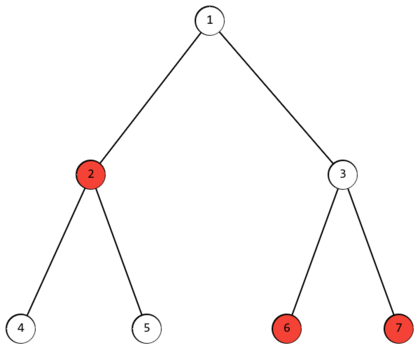| Codeforces Round 903 (Div. 3) |
|---|
| Finished |
You have a tree with $$$n$$$ vertices, some of which are marked. A tree is a connected undirected graph without cycles.
Let $$$f_i$$$ denote the maximum distance from vertex $$$i$$$ to any of the marked vertices.
Your task is to find the minimum value of $$$f_i$$$ among all vertices.

For example, in the tree shown in the example, vertices $$$2$$$, $$$6$$$, and $$$7$$$ are marked. Then the array $$$f(i) = [2, 3, 2, 4, 4, 3, 3]$$$. The minimum $$$f_i$$$ is for vertices $$$1$$$ and $$$3$$$.
The first line contains an integer $$$t$$$ ($$$1 \le t \le 10^4$$$) — the number of test cases.
The first line of each test case contains two integers $$$n$$$ and $$$k$$$ ($$$1 \le k \le n \le 2 \cdot 10^5$$$) — the number of vertices in the tree and the number of marked vertices, respectively.
The second line of each test case contains $$$k$$$ integers $$$a_i$$$ ($$$1 \le a_i \le n, a_{i-1} < a_i$$$) — the indices of the marked vertices.
The next $$$n - 1$$$ lines contain two integers $$$u_i$$$ and $$$v_i$$$ — the indices of vertices connected by the $$$i$$$-th edge.
It is guaranteed that the sum of $$$n$$$ over all test cases does not exceed $$$2 \cdot 10^5$$$.
For each test case, output a single integer — the minimum value of $$$f_i$$$ among all vertices.
67 32 6 71 21 32 42 53 63 74 41 2 3 41 22 33 45 111 21 31 41 55 24 51 22 31 44 510 81 2 3 4 5 8 9 102 1010 55 33 11 77 44 98 96 110 91 2 4 5 6 7 8 9 101 33 99 44 1010 66 77 22 55 8
2 2 0 1 4 5
36 131 21 33 43 52 65 31 2 51 21 32 43 57 123 22 66 15 67 64 5
0 2 0
| Name |
|---|




